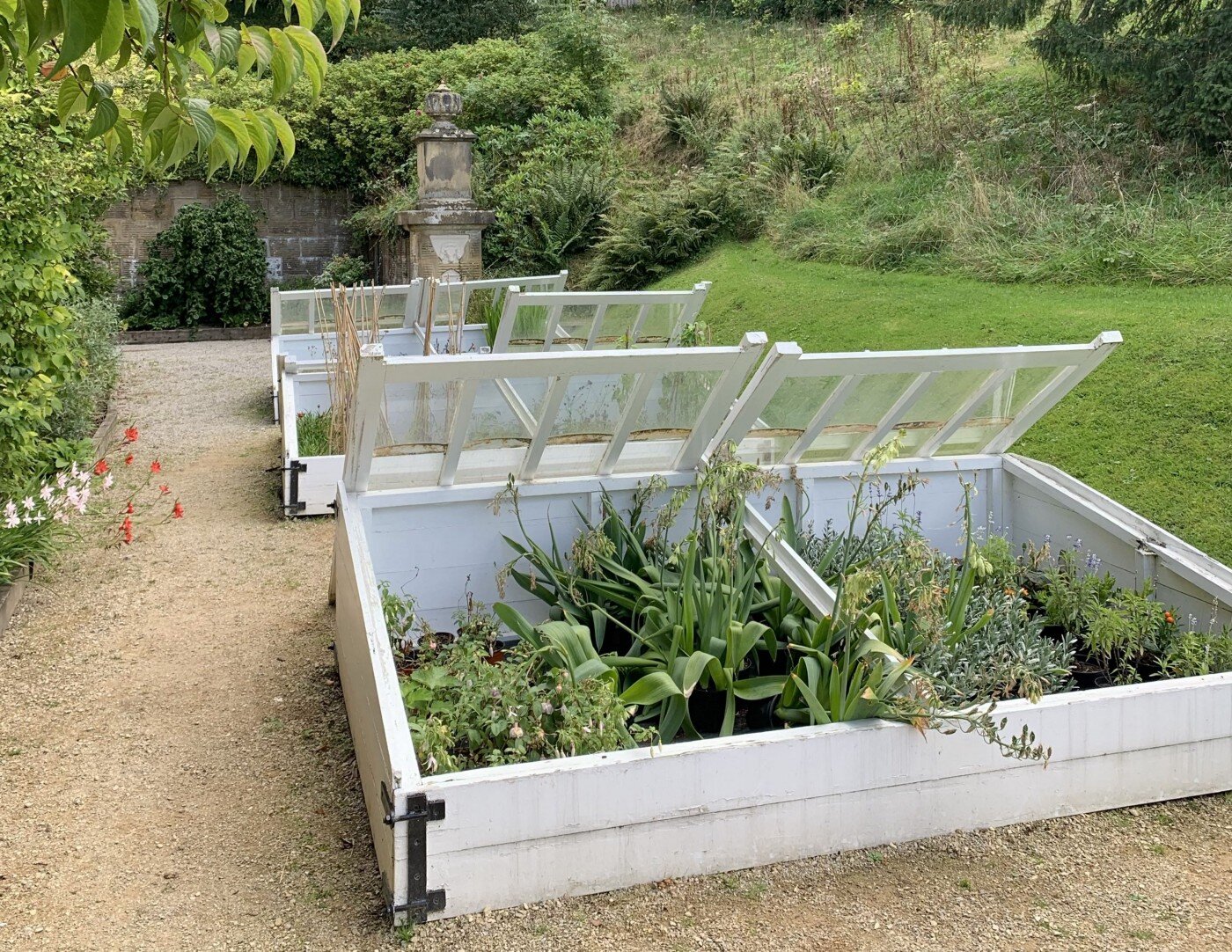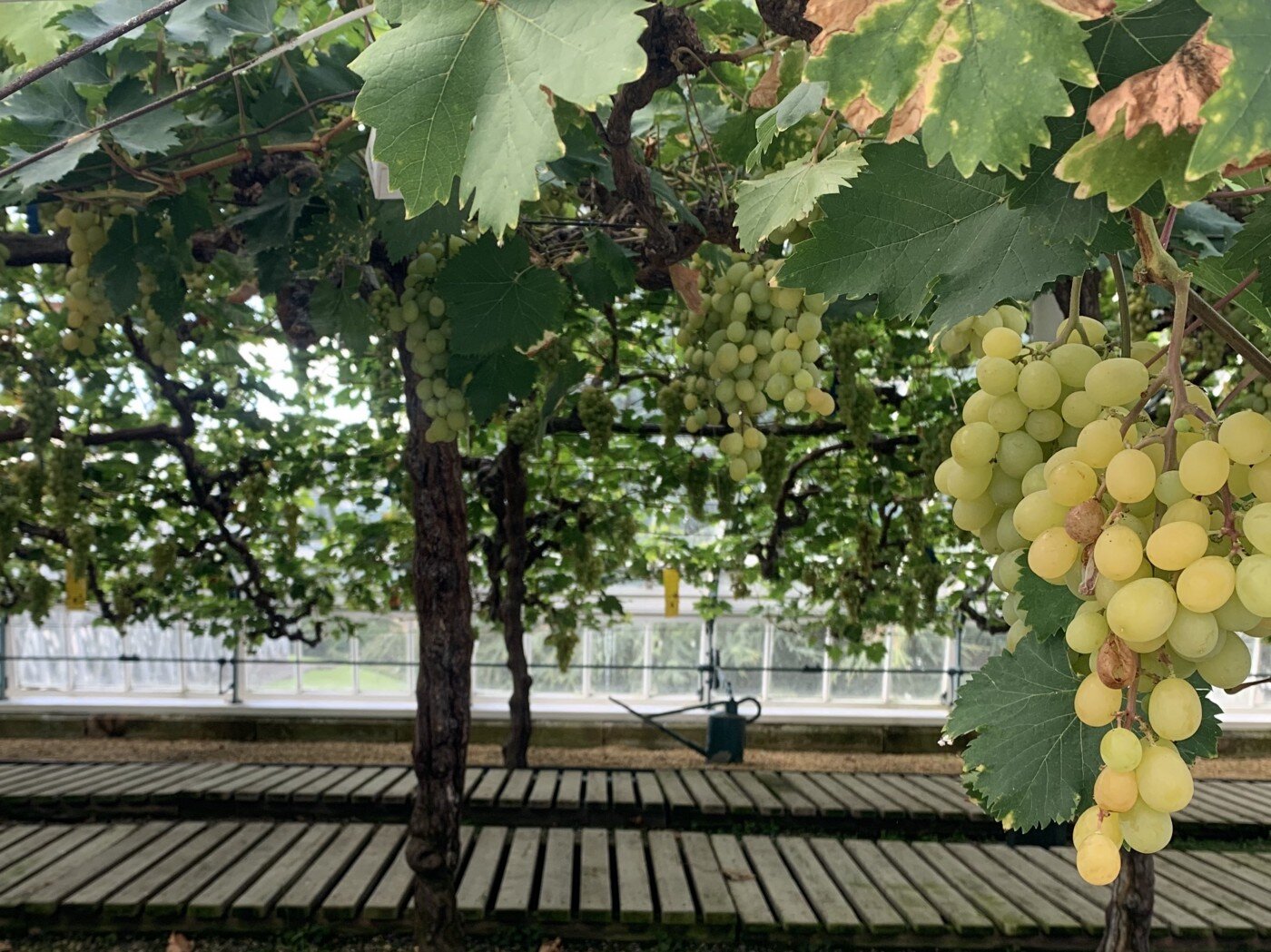Stair Rods
Woken up to a dull silence, everything is sodden. Faint patters from lingering drops leaves little room for the birds morning acoustics. Even with the curtains drawn I can tell it’s going to be a sluggish day, the type where morning reluctantly slumps into afternoon and retires to evening, all in the same colour swatch of grey.
The garden is prone to flooding and during last nights downpours all I could think about was if I’d managed to relocate the more sensitive of the potted plants, namely the succulents and bulbs, to a more suitable home. A mental roll call of the garden ensued, akin to counting sheep.
As I fretted over the newly emerging spring bulbs I couldn’t help thinking about how growing up, such a downpour would be described as ‘stair rods’—the thin metal poles which were used on stairs to keep carpets in place. Certainly a phenomenon which could be as frequent as shorts and sandals days, even in summer. In California, however, they’re met with storm warnings, flash flooding, and general excitement over getting some ‘weather’. A feeling shared by the plants too I’m sure.
Arriving at the garden I realise the worry was all for nothing. There’s a general sogginess, and a few puddles, but more than that there’s an absolute vividness to the space. Emerald to pistachio—the fuzzy grey hanging between them seems to make the shades echo all the more.
Arriving home the birds seem to have found their voice again and warming up with a cup of tea I notice tinged pink tips on the cherry tree just outside the window - spurred on by the stair rods, with its eyes set on Spring, just like the rest of us.
A Very British Garden
There’s nothing which erases memories of perilous weather and the niggling itch of thick woolly socks quite like the great British Summer. It may be unreliable, often interrupted, and frequently muddy — yet there’s something rather magical about the promise of long slow days ahead, especially when spent in the garden. For me there’s one place which triumphs above the rest. Billowing borders, fragrant filled pathways, and a colour palette which pairs perfectly alongside cream teas. This is Chatsworth.
As a child no summer was complete without a day spent on the Derbyshire Estate. Back then the emphasis was more on the playground and as many ice-creams as I could convince my parents to buy. These days I’ll happily skip the slide but could not imagine a trip back to England without a visit to the 105 acre garden.
Driving down the winding road through the estate the garden remains for the most part hidden, bounded by stone walls it gives away few secrets. The road curves to the left, swerves to the right and you suddenly find yourself coming to a halt for a flock of sheep attempting to decide which side of the road to continue grazing in. This pause gives you chance to spot one of the garden's main flaunts — The Emporer Fountain. Built in 1844 this gravity-fed, blade-like jet propels water 200ft above green trusses before falling back behind the stone curtain below. With this snippet, the stage has been set and once inside the old stone walls the show does not disappoint.
Through an archway entrance you’re greeted by the guardians of the garden — an assortment of greenhouses, cloches, and cold-frames. The sun is shining today, yet the patch of open cold-frames is a gentle reminder of the looming Northern English winter to come. Snow, even in April, is not uncommon.
Dating from the 1800s, the glasshouses stand confidently protecting the various treasures inside. Orchid houses turned vineries shelter the Muscat vines from 1901 and tropical hothouses carry such an expanse of foliage it could only be due to lack of experiencing the hardship of winter.
In the far reaches of one of these opulent canopies stands Musa acuminata‘Dwarf Cavendish’. Imported from Mauritius in 1829 the specimen grew so well in it’s new protected environment that the head gardener at the time sent one of the plants to a missionary in Samoa. Conditions there naturally matched those of the glasshouse and with no walls or roofs to dampen its excitement it absolutely flourished. The UK alone consumes around 7 billion bananas a year, the majority of these will be the Dwarf Cavendish — now grown commercially worldwide.
Moving through the swathes of verdant shapes you soon reach the water lily pond and home to Victoria amazonica. Having never flowered at its original home in Kew Gardens, the plant was brought to Chatsworth and in 1849 it bloomed for the first time. As a fast growing annual each plant is propagated from the previous lily’s seed — a ritual of dedication and honour to the original plant.
Juxtaposed next to the sumptuous tropical house is the mediterranean collection — a haven for all kinds of citrus, kumquats, and an epiphyte or two. The star of the show is undoubtedly the Citrus limon Imperial, with great sunshine fruit they are the golden child. A balanced blend of lemon and grapefruit make them the ideal candidate for the house marmalade which is found stacked in gleaming jars and unabashedly spread across cakes in the cafe. A well-deserved pitstop on our tour.
Just around the corner and in complete contrast to the confinements of the greenhouse is the cottage garden. This cacophony of green mass is speckled, dotted, and topped with lacy blossom, gradient dipped petals, and mad-hatter style cup and saucer blooms. The bees and butterflies set the tempo as they socialise amongst their swaying green skyscrapers and this, for me, encapsulates everything about British summertime — a feeling of busyness, short-lived yet an absolute pleasure to revel in while it lasts.
A wide tree-lined pathway makes for a visual palette cleanser before entering the next section. As the path narrows it’s punctuated by two large planters — a gesture the pace is changing. The pots gush with dahlias, plectranthus and nasturtium. Handwritten signs inform you they were planted two months ago, yet their magnitude suggests enthusiasm for summer much like yours and mine. Past these gatekeepers we find the kitchen garden.
This is the newest addition to the plot, created in 1991 on an area previously used for grazing horses. Spreading across three acres, it’s a riot of colour, aroma, and movement.
Home not only to the usual suspects, here you find raised beds toppling with veg, archways smattered with pears, greenery woven together by sweet peas, which are all met back at ground level by dinner plate size dahlias — a mad hatters tea party.
Despite the seemingly explosive display of plants, there is a sense of order here. You’re immediately welcomed by the cutting garden. Jewel-toned dahlias are accented with foxgloves, lupins and all the towering classics. The backdrop to this theater is a curtain of espaliered apple trees, blossoming in tune to it’s audience. The boastful displays are divided by straight narrow pathways, providing just the right amount of composure — much akin to the British demeanor.
The fruit and flowers fizzle out into a quadrant of green which makes up the salad and veg portion. Low red brick walls attempt to hold back the abundance of foliage, but as you walk around you’re inevitably nudged by a unruly kale stalk or reaching squash blossom. Rhubarb lays defeated by the added weight of summer and artichoke blooms pierce the sky.
There are four glasshouses in the kitchen garden — one dedicated entirely to cut flowers, and others teaming with tomatoes. Much of the produce grown in the here is used within the main house for cooking or decoration, and excess is destined for sale in the farm shop or made into flavourful dishes at the cafe.
Nestled next to one of the greenhouses is an old metal bench, as much a part of the garden as the plants and flowers — and on this particular Sunday evening it makes the ideal spot to soak up the late summer sun.







